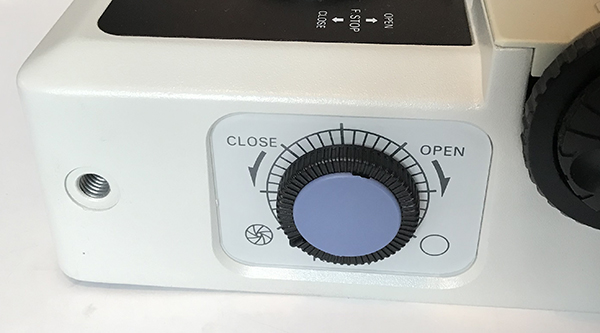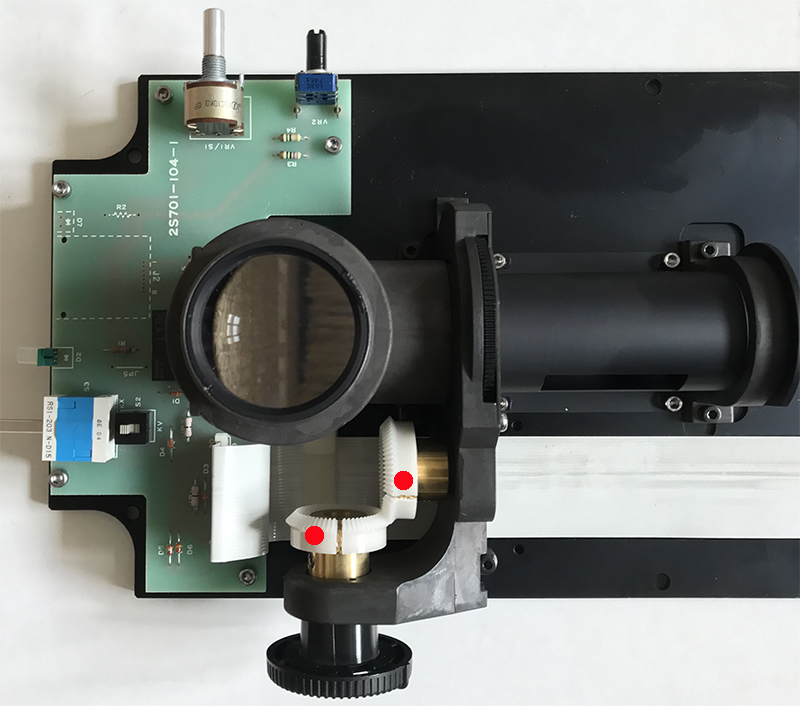
|
Repair of the seizing control of a Nikon Eclipse 800 microscope field iris. by David Walker, UK |
The Nikon Eclipse 800 was an advanced research stand announced in 1996 that sat between the 600 and 1000 model in the Eclipse range of the 1990s. (Nikon's MicroscopyU website has an excellent timeline of the Eclipse models of this era and their features). Unlike the 600, the field iris was operated by a knob on the vertical face of the limb base. I've been recently using an 800 and was puzzled by two points in the knob travel where it was seizing, sometimes the iris could not be fully stopped down at all. Fortunately this was one of the recent stands where the service manual was available for a modest sum in pdf form from some microscope dealers. So investigated why this was happening.

With the aid of the service manual, removal of the base was fairly straightforward after the filter cassette was removed and the delicate ribbon cable leading to a side circuit board was detached. The bottom panel also needed a certain amount of shimmying to allow the potentiometer shafts of both the light intensity control and on/off knob to be eased out without damaging the circuit board.

Nikon Eclipse 800 bottom panel. The red spots show the two cracks in the field iris gearing causing the two seizing spots in its travel. The light switch shaft is to the left and the lamp intensity control at the top. The smaller pot to the right of the intensity control adjusted the preset light intensity level.
The service manual showed that the iris was operated via a pair of bevelled gears linked to a geared iris mount so suspected some teeth may have worn or broken and possibly not repairable. If spares were required, as is often the case nowadays, the big names quickly lose interest in supplying spare parts for models even a few decades old despite them likely still being in extensive use by many institutions.
Inspection showed that the teeth were in good condition but the plastic toothed rings both had splits. It's not clear if they were intentionally split after manufacture to slip on the brass shafts or whether the plastic had shrunk on both and had split. If the former the gears had been set incorrectly to avoid them encroaching within the iris travel. Fortunately this was quite an easy fix as the full iris travel only used a part sector of the gearing circle. Loosening the Allen bolt on both brass shafts allowed the gears to be disengaged and reset so that the cracks were 'paired' in the travel and never encountered when using the iris control.
Comments to the author David Walker are welcomed.
Published in the July 2021 edition of Micscape.
Please report any Web problems or offer general comments to the Micscape Editor .
Micscape is the on-line monthly magazine of the Microscopy UK web site at Microscopy-UK
© Onview.net
Ltd, Microscopy-UK, and all contributors 1995 onwards. All rights
reserved.
Main site is at www.microscopy-uk.org.uk.